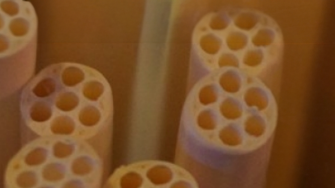
Membrane cleaning and disinfection is an important aspect in membrane operations, particularly in diary processes. Selection of cleaning agents and the cleaning procedure affects not only on membrane integrity, related costs and the environment but also the quality of products being processed. While most of the cleaning in practice uses chemicals (alkaline and acid), enzymatic cleaners have been shown to be very effective in removal of protein species from the membrane surface. One issue that relates to enzyme cleaning is the possible re-deposition of the cleaning enzyme on the cleaned membrane surface, which could pose a contamination risk to the processed product.
This research has been evaluating the overall cleaning efficiency in sequential enzymatic and chemical cleaning with variations of chemical dosage and cleaning time in order to achieve the optimum cleaning outcome.Despite the apparent advantages, there has been only limited investigation of the impact of coagulant choice and dosing conditions on nutrient removal, membrane fouling and excess sludge dewatering in SMBR treatment of wastewaters. One reason for the limited research undertaken to date in this area relates to the complexity of the SMBR system and the variety of reactions that can occur on addition of a coagulant to a membrane bioreac
